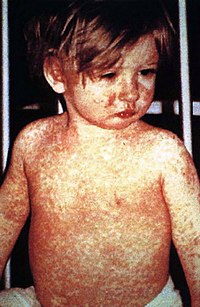
Photo from wikipedia
During local and systemic inflammation, the complement system and neutrophil granulocytes are activated not only by pathogens, but also by released endogenous danger signals. It is recognized increasingly that complement-mediated… Click to show full abstract
During local and systemic inflammation, the complement system and neutrophil granulocytes are activated not only by pathogens, but also by released endogenous danger signals. It is recognized increasingly that complement-mediated neutrophil activation plays an ambivalent role in sepsis pathophysiology. According to the current definition, the onset of organ dysfunction is a hallmark of sepsis. The preceding organ damage can be caused by excessive complement activation and neutrophil actions against the host, resulting in bystander injury of healthy tissue. However, in contrast, persistent and overwhelming inflammation also leads to a reduction in neutrophil responsiveness as well as complement components and thus may render patients at enhanced risk of spreading infection. This review provides an overview on the molecular and cellular processes that link complement with the two-faced functional alterations of neutrophils in sepsis. Finally, we describe novel tools to modulate this interplay beneficially in order to improve outcome.
Journal Title: Seminars in immunology
Year Published: 2018
Link to full text (if available)
Share on Social Media: Sign Up to like & get
recommendations!